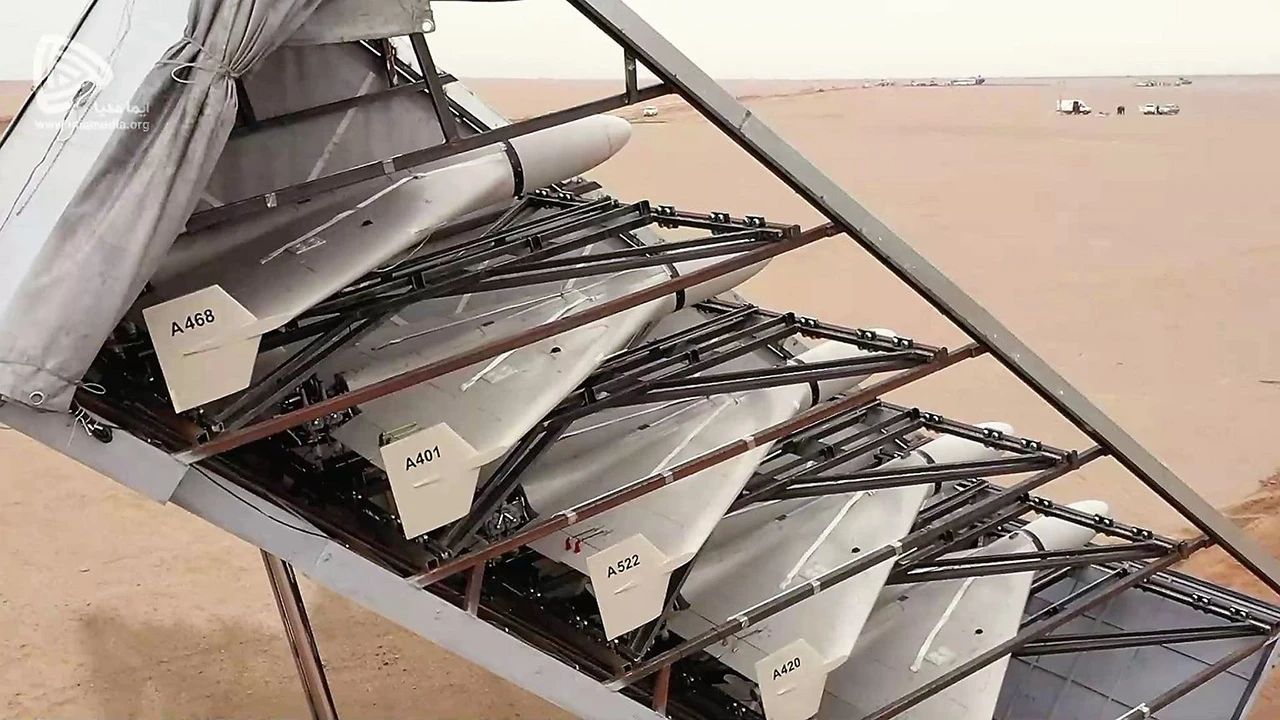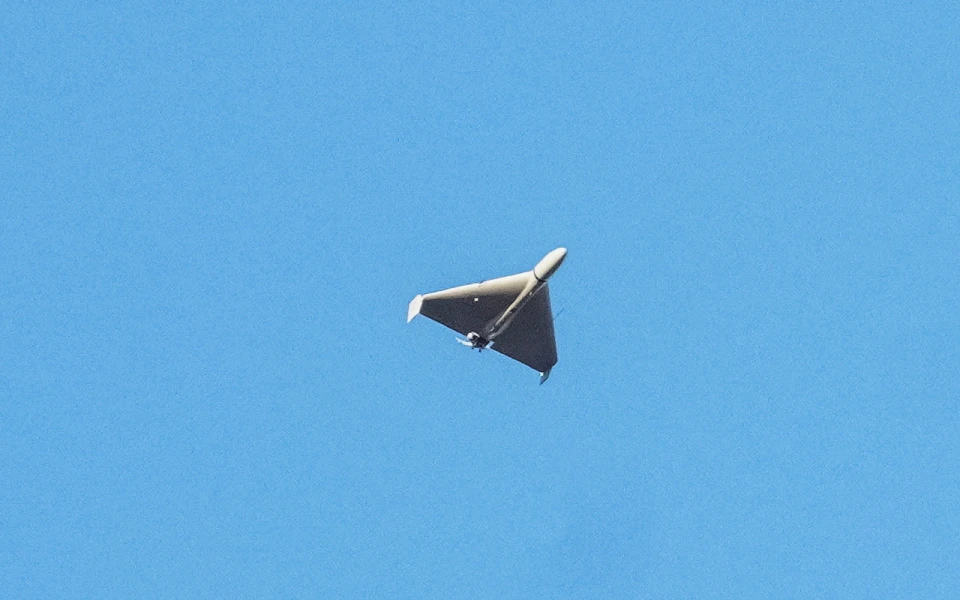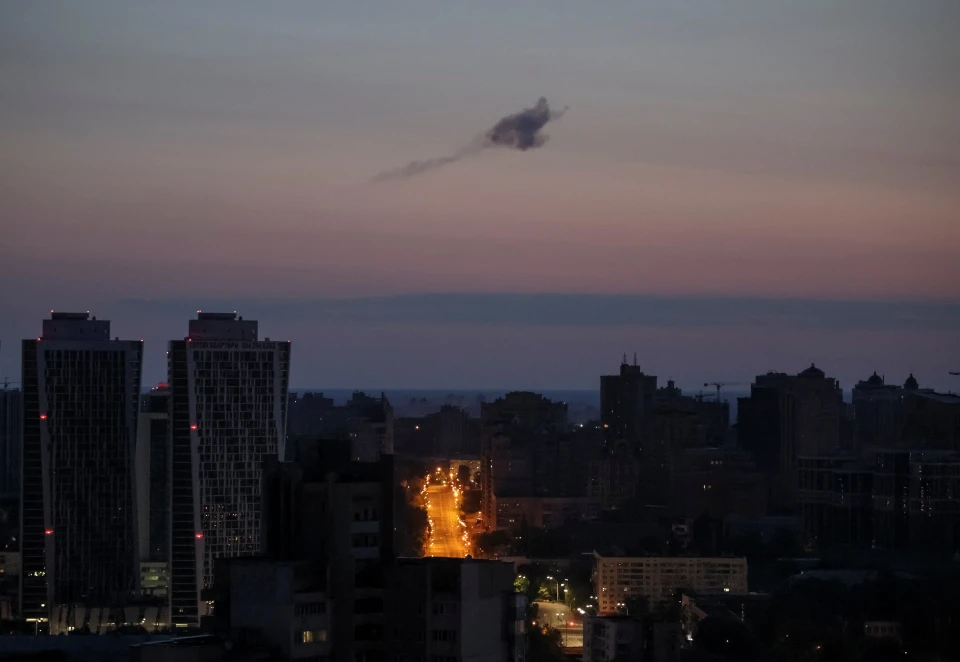
Iran's Shahed 136 ‘kamikaze’ drones: key features of explosive-laden UAVs used by Russia for nearly a year
Almost every week, the Ukrainian military shoots down Iranian Shahed 136 drones by the dozens, and the total number of downed drones has already reached thousands. Yet Russia still has a lot of these weapons
Espreso will explain the history of creation, key characteristics and features of the Shahed 136 UAV, which the Russian army is repurposing as its own Geran-2 drones.
History of creation and key features

Photo: video screenshot
The Shahed 136 is part of a whole family of drones developed by the Shahed Aviation Industry Research Center, an Iranian aerospace company that also builds military helicopters. The company began designing and manufacturing various types of Shaheds in the 1990s to keep up with the US and Israel in terms of modern weapons. The word “shahed” means "witness" or "martyr" in Arabic and Persian. Thus, it is a reminder that these drones are “kamikazes” that strike only once.
Shahed 136 was first presented to the public relatively recently - in 2020. Only a year later, Iran showed a truck-mounted launcher for the volley launch of Shaheds. This is one of their advantages - ease of launch. After all, containers with them can be put not only on trucks but also on railroad cars, ships, and other vehicles.
Another important feature is their low cost. A single Iranian Shahed 136 “kamikaze” drone costs between USD 20,000 and USD 50,000. That is the price of a new car. For comparison, the Kalibr cruise missile, which can cover twice the distance, costs USD 5-6 million per unit. These drones are more expensive to shoot down than to buy if expensive air defense missiles are used against them. That's why Shaheds are often shot down by mobile groups using various types of machine guns and even small arms.
Features of the Shahed 136

Photo: Reuters
Shaheds are barrage munitions, i.e. flying munitions. The main purpose of such drones is to hit targets at a long distance (the declared maximum range is 2,500 km, the actual range is half that). They are guided by satellite coordinates. They have very low targeting accuracy. The Shahed-136 cannot find targets and attack moving objects on its own. The drone is launched only towards large stationary targets.
Shaheds have a noisy two-cylinder carbureted MD 550 or 3W gasoline engine (which sounds like a moped and can be heard kilometers away). The weight of the drone is 200 kg, plus the weight of the high-explosive warhead of 30-40 kg. It is 3.5 meters long and has a wingspan of 2.5 meters. The drone has a delta-shaped triangular wing. The Shahed 136 can fly at an altitude of 60 to 4,000 meters at a speed of 180 km/h (which allows it to be detected and shot down faster).
It is also interesting that the drone's body is made of getinax (resin bonded paper), and the propeller on the motor is made of wood.
Application in warfare

Photo: PvkZahid
The potential use of these drones by Russia was initially speculated in the summer of 2022. In July, a Russian military delegation visited Iran, where they were introduced to the Shahed drone series. By the end of August, international media started reporting, citing American intelligence sources, that Russia had acquired an initial batch of these “kamikaze” drones, numbering in the hundreds. Subsequently, in September, Russian troops started launching them against the Ukrainian Armed Forces, posing a significant threat as a novel weapon on the battlefield.
On September 12, the Ukrainian military shot down a Shahed 136 for the first time near the city of Kupyansk, Kharkiv region. Within a month, the Ukrainian Armed Forces destroyed over 200 of these drones. According to Yuriy Ihnat, a spokesman for the Ukrainian Air Force, Ukrainian air defense mostly shoots down 80-85% of these flying “kamikazes.” But despite this high efficiency of air defense, the drones that fail to be shot down pose a significant danger: they destroy both civilian and military infrastructure, killing and injuring Ukrainians. Shaheds are mostly used several at a time or in waves and are directed at the same or different targets. Therefore, there are often dozens of flying “mopeds” (drones are nicknamed, because of their distinctive engine sound - ed.) with explosives moving in the same direction. In addition, sometimes Russian troops launch Shaheds only to exhaust Ukrainian air defense for the further use of more powerful missiles.
In the second half of November last year, the launches of these drones decreased, as the Russians were launching them so actively that they used up almost all of the drones that had been delivered from Iran. But a few weeks later, in mid-December, when a new batch arrived in Russia, the Shaheds began to be used en masse again and were fired upon Ukrainian cities. Ukrainian intelligence reported the purchase of over 1,500 more Shaheds. All in all, according to intelligence, Russia has ordered over 4,000 of these barraging munitions. In early August, President of Ukraine Volodymyr Zelenskyy said that Russian terrorists had launched at least 1,961 Shaheds against Ukraine, many of which were Shahed 136. That is, Russia has at least the same number of these “kamikaze” drones in its warehouses. In addition, in July 2023, Russia localized its own Shahed-136 production in Tatarstan across the Volga River (over 1,000 kilometers from Ukraine).
How civilians can protect themselves from Shahed drones

Photo: Reuters
In October 2022, Ukraine’s Advisor to the Minister of Internal Affairs, Anton Herashchenko, called on gun owners to shoot down enemy drones on their own. At the time, he posted a video of Kyiv police officers using machine guns to shoot down a drone in the center of the capital. However, the police themselves negatively assessed Herashchenko's statements and reminded him that citizens should think about their own safety first, not how to shoot down a drone. The then head of the Ministry of Internal Affairs, Denys Monastyrskyi, urged civilians not to try to shoot down UAVs on their own, saying that the best help would be to call 102 to record where the drone was flying and at what time.
So what should you do when you hear the distinctive sound of “mopeds” in the sky? First of all, don't panic, try to assess the situation around you. If you are near any administrative buildings, or strategic and military facilities, move away from them, because the targets of Shaheds are non-mobile large objects. Of course, the best thing to do is to find the nearest shelter and do not ignore the air raid alert.
- News












































